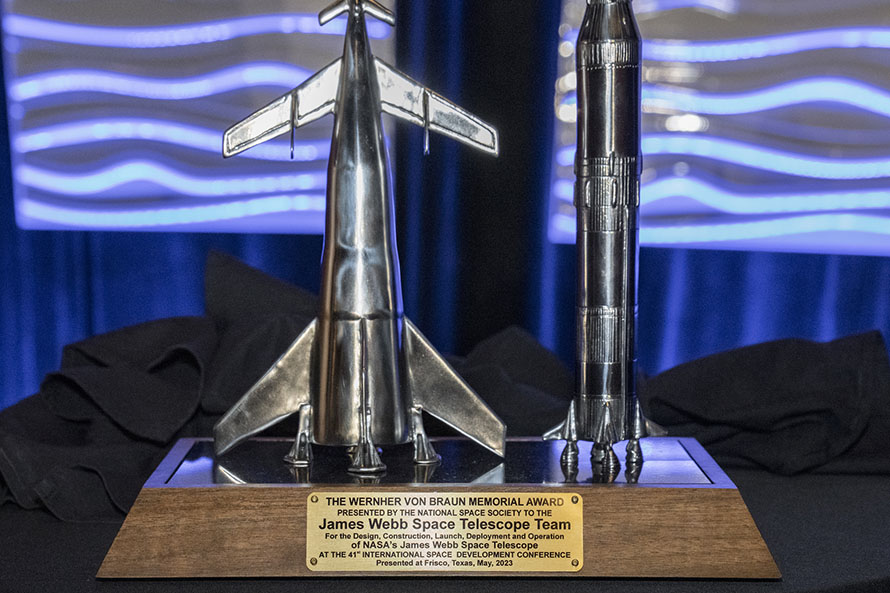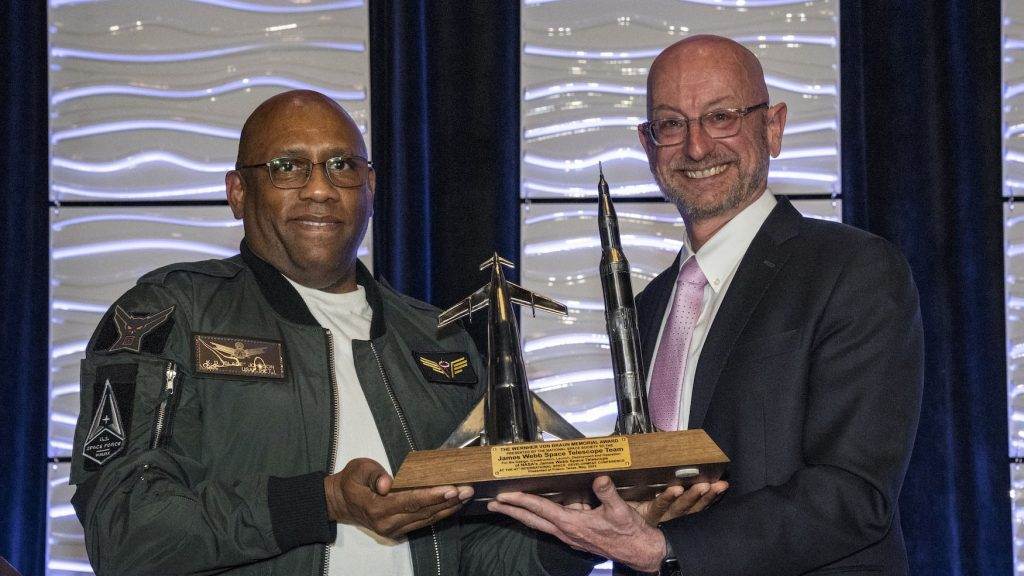Magnificent Science Returns Earn the James Webb Space Telescope Team the NSS Wernher von Braun Memorial Award
Image: Karlton Johnson, Chair of the NSS Board of Governors, presents the von Braun Award to Dr. Eric Smith, Program Scientist for the Webb Telescope.
The National Space Society is proud to announce that the Wernher von Braun Memorial Award was bestowed upon NASA’s James Webb Space Telescope team on May 27, 2023, at its 41st International Space Development Conference® (ISDC®). The von Braun Award is granted every other year to recognize excellence in management and leadership of a space-related project in which the project is significant, successful, and is the result of a strong management team.
“NSS is thrilled to have awarded this prestigious recognition to the Webb Space Telescope team,” said Anita Gale, NSS CEO. “The JWST has revolutionized how we see the universe and our own solar system.”
Dr. Eric Smith, the Associate Director for Research in the Science Mission Directorate’s Astrophysics Division at NASA Headquarters and Program Scientist for the James Webb Space Telescope, accepted the award for the Webb team and NASA’s Goddard Space Flight Center. Dr. Smith is the NASA scientist responsible for the Webb science content and also monitors and manages the science program for both the Webb Telescope and Hubble Space Telescope, ensuring their missions remain viable and true to NASA strategic objectives.
“The deployment and commissioning of the JWST has been one of the most significant scientific developments of the 21st century,” said Isaac Arthur, president of NSS. “We felt there was no better recipient for the von Braun award.”

The Webb operates at infrared frequencies, which is very challenging to accomplish from the Earth’s surface, and observing in infrared allows the telescope to see further and more clearly than any previous instrument of its kind. New discoveries from existing and previously undiscovered targets began to accumulate almost immediately after its commissioning.
The ever-growing list of Webb discoveries includes direct imaging of exoplanets and the identification of key gases in their atmospheres; tracking clouds on Saturn’s moon Titan; identifying new details in a cluster of galaxies; imaging the incredibly faint rings around Uranus; capturing the galactic merger of Arp 220; discovering sand-bearing clouds on a remote exoplanet; measuring the temperature of a rocky exoplanet; and observing galaxies seen in their earliest years, when the universe was just 350 million years old – about two percent of its current age.



















